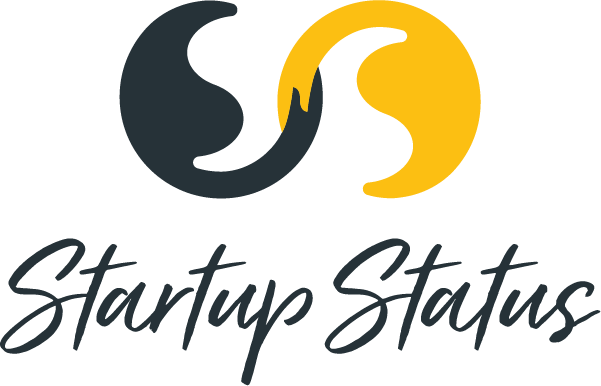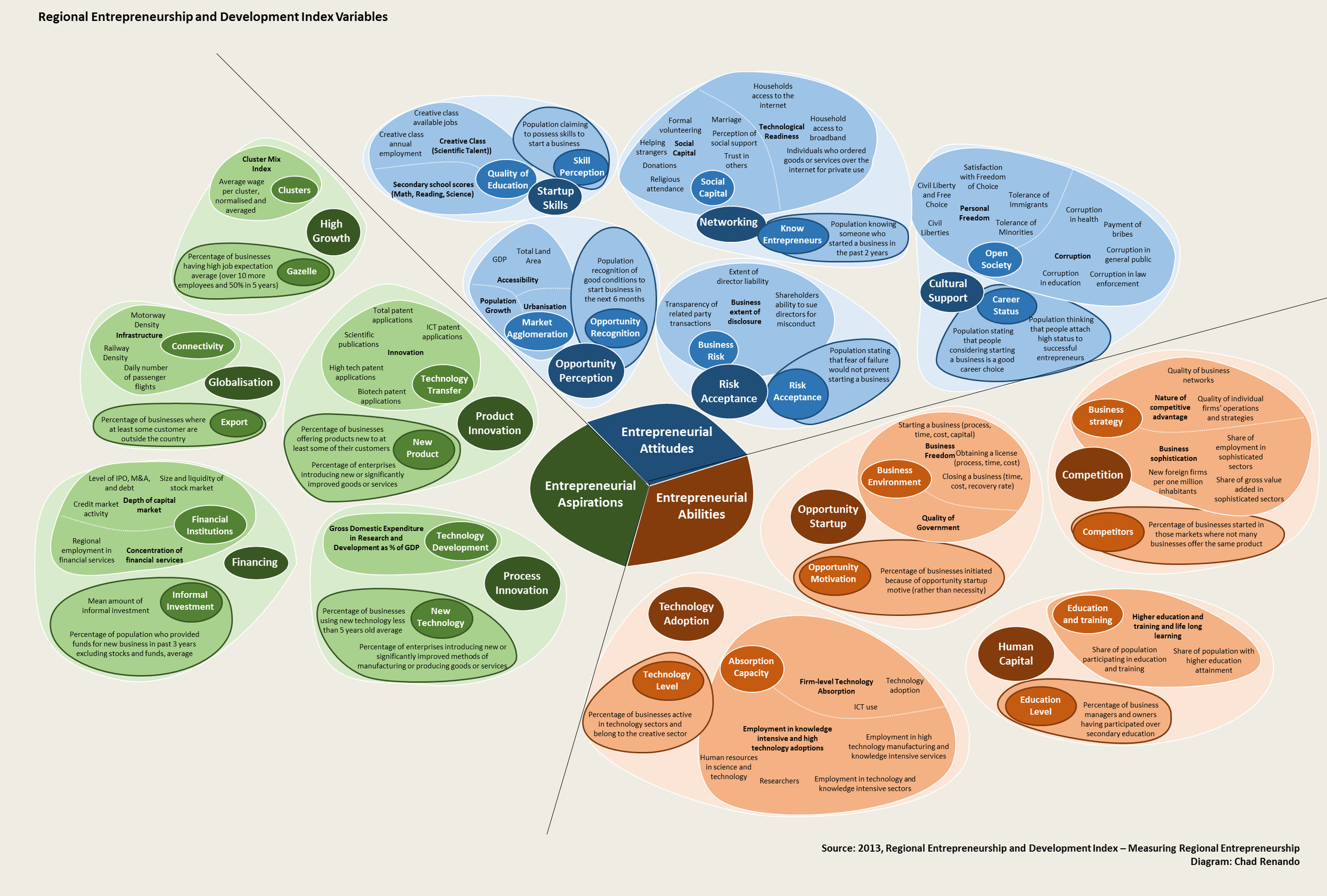The journey of the entrepreneur is inherently tied to the place in which they develop their idea and grow and scale their enterprise. This is evident when environments such as Boulder, Colorado and Silicon Valley become synonymous with startup activity and a testament to the value of the local ecosystem.
Mass relocation to an established startup ecosystem is not viable or realistic, and straight comparisons to become “the next Silicon Valley” are not helpful. Those of us who do not reside in startup capitals but support local startup activity can consider what it takes to build entrepreneurial capability in our own regions to get more effective outcomes. This is particularly true in regional areas where entrepreneurial activity is critical for resilience against inevitable market disruptions.
Questions we can ask include:
- What is my local ecosystem?
- How do I measure and assess the health of my ecosystem?
- Where can I influence my ecosystem, and what will have the most effective results for the local entrepreneur and the region?
As a contributor to my regional ecosystem and a researcher in community resilience, I am on a mission to make sense of innovation ecosystems. Thankfully, I can borrow from the incredible work of others who have gone before me who have asked similar questions.
I start by looking at three bodies of work. I took liberties with displaying the information, creating infographics to better understand and communicate the relationships between the variables. (Insert caveat here about not being a designer and apologies in advance to authors of the source material.)
Model 1: Measuring Entrepreneurial Ecosystem Vibrancy, the Kauffman Foundation
The first approach to ecosystem measurement I look at is a March 2015 overview produced by the Kauffman Foundation titled Measuring an Entrepreneurial Ecosystem. The model has been tested against small groups of entrepreneurs, localised ecosystems such as Tampa Bayand Indiana, and used for a comparison of metro areas over time.
The model looks at 12 measures across four broad indicator groups of Density, Fluidity, Connectivity, and Diversity. The authors note an attempt to find the “middle ground between trying to capture every dimension of an entrepreneurial ecosystem and overly focusing on only one or two indicators.” They do this with an emphasis on “the overall performance of the ecosystem in terms of outcomes and vibrancy.”
Model 2: Entrepreneurial Ecosystem Diagnostic Toolkit, the Aspen Network of Development Entrepreneurs
The second model I look at is the 2013 Entrepreneurial Ecosystem Diagnostic Toolkit produced by the Aspen Network of Development Entrepreneurs. The Toolkit is based on an assessment of nine separate approaches including: the Babson Entrepreneurship Ecosystem Project, the Council on Competitiveness’ Asset Mapping Roadmap, George Mason University’s Global Entrepreneurship and Development Index, Victor Hwang’s Innovation Rainforest Blueprint, Koltai and Company’s Six + Six model, GSM Association’s Information and Communication Technology Entrepreneurship, OECD’s Entrepreneurship Measurement Framework, World Bank’s Doing Business, and World Economic Forum’s Entrepreneurship Ecosystem.
The evaluation considered different factors inherent to a framework, including:
- Complexity: Number of indicators and the relevancy, accuracy and availability of the indicators
- Geographic unit of analysis: institution, local, regional, state, national, and/or global
- Depth of analysis: Specific to a single asset or institution, Basic SWOT analysis for benchmarking, or Comprehensive including linkages and key actors
- Domain: Specific to a topic such as social enterprise, an industry such as manufacturing or agriculture, or other scope such as regional or public sector
- Data collection: Methods use, and primary or secondary sources
The result is a synthesis of ten domains: Policy; Finance; Infrastructure; Markets; Human Capital; Support, services and connections; Culture; R&D and Innovation; Quality of life; and Macroeconomic Conditions
This then resulted in 65 indicators across the domains:
Model 3: The Regional Entrepreneurship and Development Index (REDI)
The Regional Entrepreneurship and Development Index (REDI) is a framework adapted to a regional level based on the Global Entrepreneurship and Development Index (GEDI). Both frameworks seek to measure so they can then provide comparisons of ecosystems across geographic regions.
The REDI framework is useful because it acknowledges the complexity and dependency between individual entrepreneurs and regional institutional variables. While initially focused on comparing regions in the EU, the approach could be applied for any regional area.
The framework is grouped into three areas of entrepreneurial attitude, ability, and aspiration. Each area has four or five pillars. Each pillar has two variables, one for the country or region, and one for the individual entrepreneur or business (in the diagram above, the individual variable is outlined in a dark colour). Each variable has one or more indicators and sub-indicators.
For example, the area of Entrepreneurial Attitudes has a pillar of Startup Skills, with an individual variable of Skill Perception and a region or country variable of Quality of Education. These then have sub-variables of those claiming startup skills, employment and jobs in the creative class, and secondary school scores.
Practical application: Gamify ecosystem leveling up
As I map out the different frameworks, I am reminded of skill tree structures in various role playing games. These game structures list attributes such as Strength, Dexterity, or Wisdom that you can focus on as you gain experience and level up. Gamers are provided clear pathways to achieve new levels by purchasing equipment or buildings, by training, or by what is called “grinding” – completing routine tasks repeatedly.
In the same way, regions can level up attributes to build experience into their innovation ecosystem and entrepreneur support capabilities. Imagine if each region had a dashboard like a game where everyone could see their community “level up” by adding an accelerator, running more events, educating more angel investors, reducing the time to start a business, or increasing participation in the creative class. These frameworks provide a prescription for what we need to do to build resilience in and level up our regional ecosystems.
The approach is one of both measurement and application. Change begins as soon as you ask the question. For example, simply asking a region about their fear of starting a business will influence their risk acceptance. We should not wait for the answer, however, to begin implementing policy, media, financial, and research mechanism to positively influence a region’s fear of failure.
Addressing ecosystems is also a collaborative multi-player game. I am conscious of the role played by an innovation hub, but accountabilities are spread across other ecosystems actors such as three levels of government, financial institutions of banks and investors, business service providers, education, and more. Everyone plays a role in applying their specialist abilities and resources to levelling up their ecosystem.
Is something missing? – To what end?
Efforts to build innovation ecosystems are based on a premise that entrepreneurial activity is inherently good for a region’s overall economic outcomes. While this is true, we also see several examples where startup activity has contributed to an increase in embedded regional inequality.
Innovation and measurement frameworks are morally neutral. Ecosystems defined by these models are designed to facilitate entrepreneurial wealth, but there are no variables to measure how that wealth is applied. My concern is that if we are not intentional about assessing how innovation is applied, we will re-create established inequalities in new ways and call it progress.
The measurement of ecosystems and influence towards positive outcomes will be top of mind as I attend the Kauffman Foundation Eship Summit this June in Kansas City. The summit is a gathering of entrepreneurial ecosystem builders passionate about and actively involved in influencing ecosystem outcomes. I look forward to learning from the incredible wisdom in the room, and sharing with others who are not in the room during and after the event as I take the lessons to apply back in regional Queensland.
Please connect with me if you are involved in developing ecosystems. I am keen to collaborate, partner, and share outcomes wherever I might add value.



Trackbacks/Pingbacks